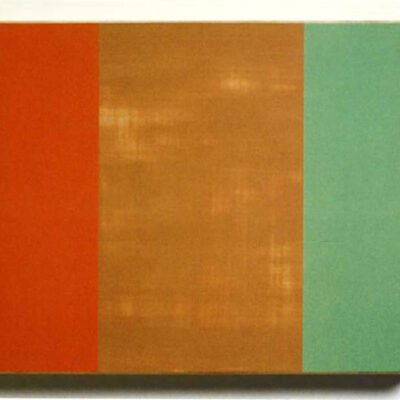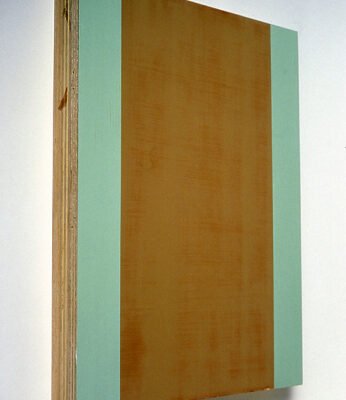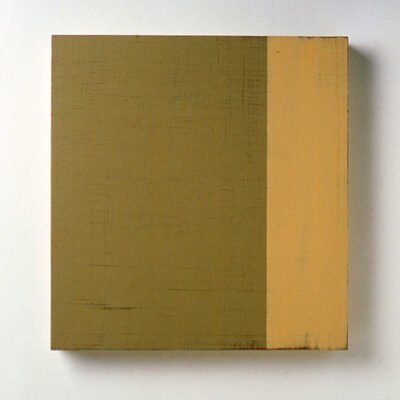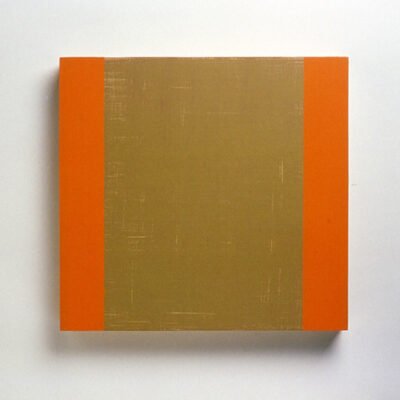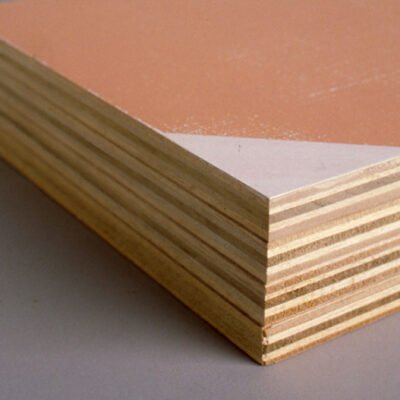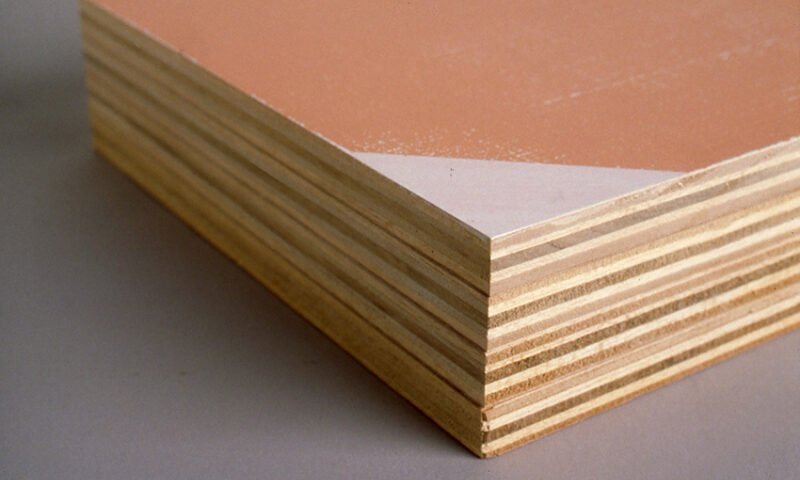

Polly Lanning
Polly Lanning’s paintings for her exhibition, Parallels, were linguistic objects, visual images loosely tied to concepts and to actual things. She used the properties of the paint and pigment, the flatness of the surface, and the shape of the support to convey her abstract story.
Each painting consisted of two to four sheets of plywood cut, stacked, and fastened together, fifteen to twenty coats of gesso, and ten to twenty coats of paint with sanding at every stage. They became thick and heavy objects with surfaces built up and worn smooth to the texture of fine Formica or aluminum siding. The overall shapes of her images equaled the shapes of the flat surfaces of her chosen plywood supports. The designs of her images could be read in a number of contradictory ways. Lanning based her painting designs on framing devices such as common wooden frames, horizontal or vertical borders, mounting corners, or on support devices such as stretchers, braces, brackets, or corner supports. Most of her images could be read as both frames and supports. These thick and weighty paintings, many with beveled edges, could literally stand on their own in a space. Lanning used muted, subtle colors, not quite green, not quite blue, not quite orange, therefore not immediately referential but still somehow familiar. Her precise bands of colored paint were reminiscent of the clean-edged minimalist style paintings of the 1970s. Her paintings reflected the history of how they were made, layer by layer. Lanning’s abstract paintings told a story. Her process and her resulting works literally framed the memory process, fixed it, materialized it, and rendered it visible.
